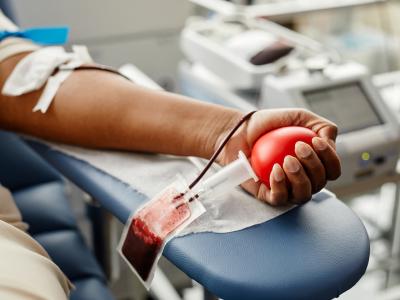Multifaceted strategy helps improve primary care prescribing in Portugal
A multidisciplinary, multifaceted intervention aimed at targeting health professionals' and patients' attitudes regarding antibiotic use helped improve outpatient antibiotic prescribing at Portuguese primary care clinics, a team of Portuguese researchers reported yesterday in the Journal of Antimicrobial Chemotherapy.
In a cluster-randomized controlled trial conducted in the catchment area covered by Portugal's Central Regional Health Administration, researchers looked at the impact of a voluntary intervention that used a combination of learning methods, topics, and strategies designed to address previously identified gaps in knowledge and attitudes about antibiotic prescribing. The intervention, which was explained in a letter to all clinic directors of primary care facilities in the intervention group, included active outreach visits to clinicians and pharmacists and dissemination of educational materials (posters and flyers) to the general public.
The trial measured the impact of the intervention on a set of quality indicators that included relative ratios of prescription of penicillins sensitive to beta-lactamase, penicillin combinations including beta-lactamase inhibitors, third- and fourth-generation cephalosporins and fluoroquinolones, and the ratio of broad- to narrow-spectrum antibiotics.
The participation rate in the educational intervention was 64% (197/309 primary care offices) in a total of 25 counties. Statistically significant improvements were obtained in the relative prescription of penicillins sensitive to beta-lactamase (overall relative change of +896%) and penicillin combinations including b-lactamase inhibitors (−161%), as well as in the ratio of broad- to narrow-spectrum antibiotics (−200%). Statistically significant results were also obtained for third- and fourth-generation cephalosporins, though only in the first month after the start of the intervention. No statistically significant effect was found for the relative prescription of fluoroquinolones.
"Improving the quality indicators of antibiotic prescribing is one of the main challenges facing efforts to halt antibiotic misuse," the authors write. "This study shows that these indicators can be improved by addressing knowledge and behavioural aspects surrounding physicians' clinical practice."
Jun 30 J Antimicrob Chemother abstract
European study examines susceptibility trends in urinary pathogens
In another study yesterday in the Journal of Antimicrobial Chemotherapy, French and Swiss scientists reported that urinary isolates collected from 24 European hospitals from 2010 through 2016 showed increasing susceptibility to fluoroquinolones and decreasing susceptibility to third-generation cephalosporins.
The retrospective cross-sectional study, conducted in emergency departments (EDs) in Denmark, France, Italy, Germany, the Netherlands, Spain, and Switzerland, analyzed 88,242 urinary isolates for temporal antimicrobial susceptibility trends. Escherichia coli (67.6%), Klebsiella spp. (8.4%), and Enterococcus faecalis (4.5%) were the main bacteria identified. Susceptibility of all isolates to third-generation cephalosporins and fluoroquinolones was 83.6% and 77.6%, respectively, and was slightly higher in E. coli. Susceptibility rates were highly variable across EDs.
Time-series analysis found a significant increase in susceptibility to fluoroquinolones and no significant trend for susceptibility to third-generation cephalosporins. But adjusting for patient age and sex, ED and organism, multivariate models showed that susceptibility to third-generation cephalosporins decreased from 2014 to 2016 (compared to 2010), while susceptibility to fluoroquinolones increased in 2015 and 2016.
Among isolates from 2016, multivariate models predicted high probability of susceptibility to fluoroquinolones in 11% of isolates (positive predictive value 91%) and a high probability of susceptibility to 3GCs in 35% of isolates (positive predictive value 94%). The authors say this finding is noteworthy because it suggests that the models could potentially be used to identify patients eligible for fluoroquinolone or third-generation cephalosporin treatment for pyelonephritis in EDs where susceptibility in the previous year was lower than 90%.
They note, however, that the ability of the models to guide empirical treatment of pyelonephritis in EDs still needs to be assessed.
Jun 30 J Antimicrob Chemother abstract









